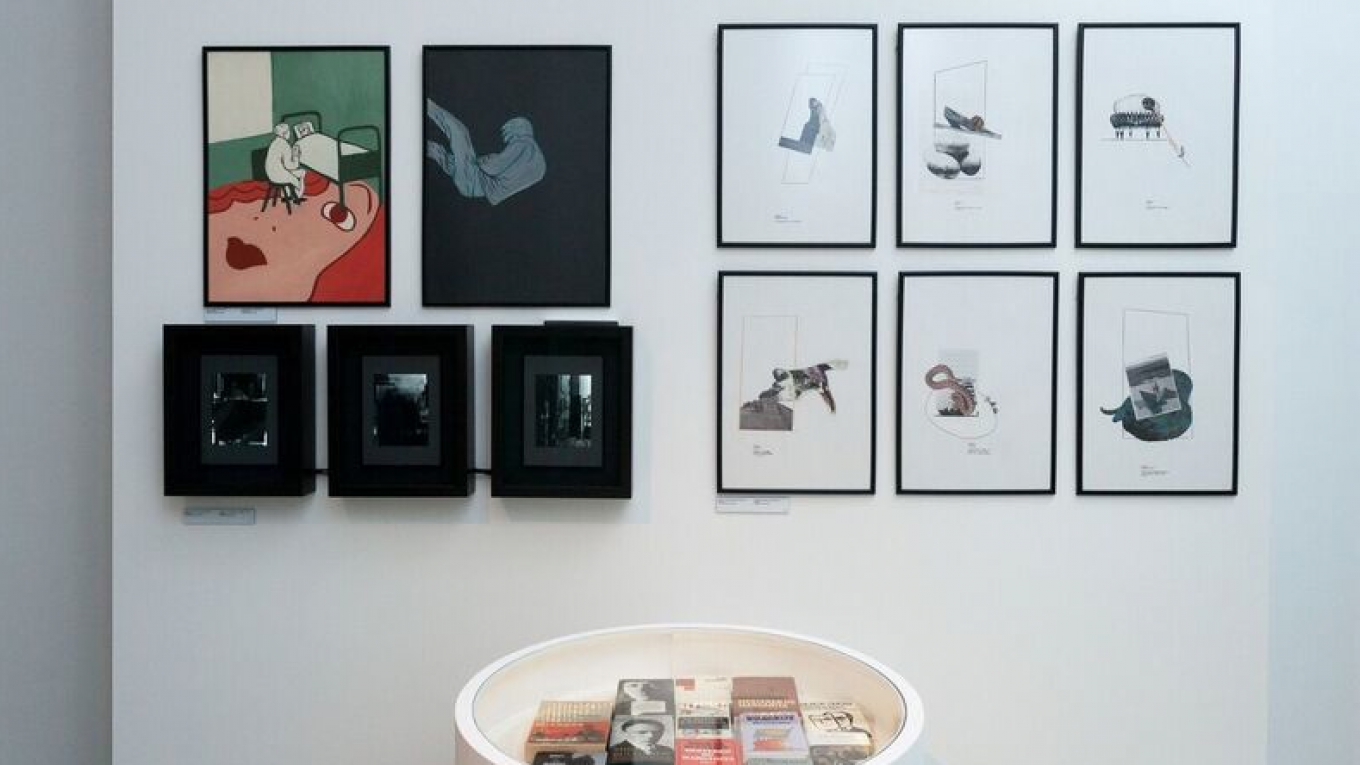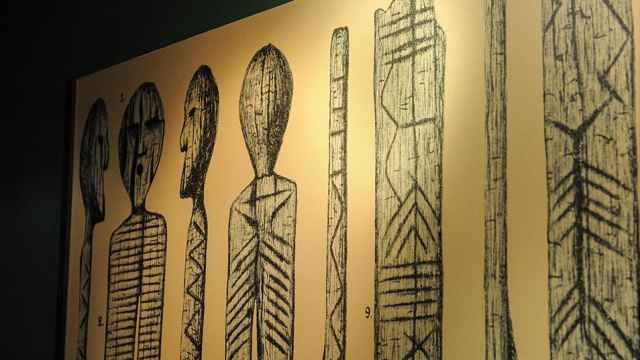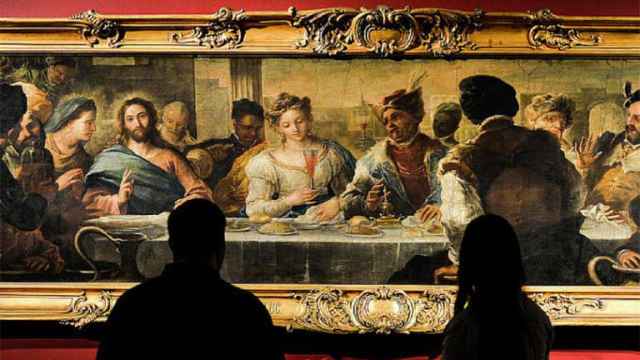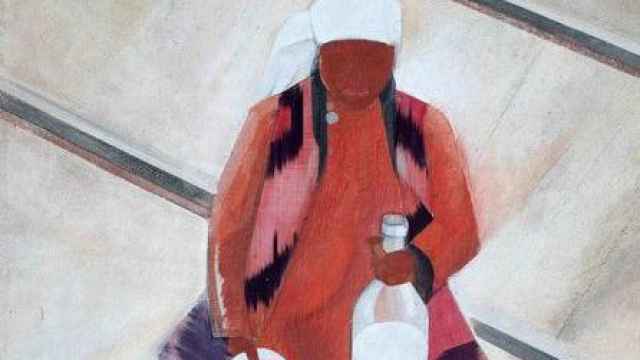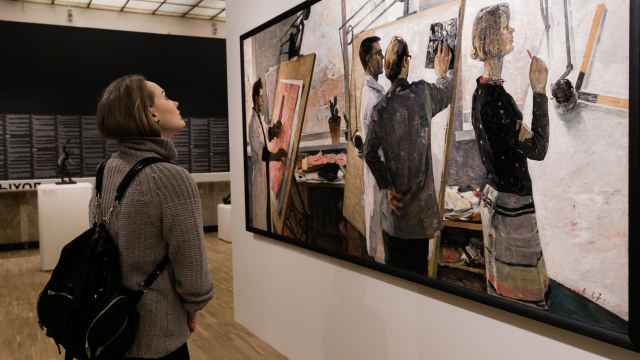Ask a Russian what their favorite book is and there’s very high probability they’ll answer “The Master and Margarita.” Given the popularity of the novel and the cult status of its writer, there’s little doubt the monumental new exhibition dedicated to Mikhail Bulgakov at the New Manege is one that crowds will happily queue in freezing temperatures to see.
The exhibition, which marks the 125th anniversary of the writer’s birth, includes 700 items from some 30 museums, archives and private collections including the Moscow and St. Petersburg Bulgakov museums. “Bulgakov. Two Biographies” — more a pop-up museum than an exhibition — aims to offer an insight into the life the author and the legacy of his work.
“On the one hand, visitors can see Bulgakov through the eyes of his contemporaries, who knew him as a playwright, director, adapter and actor,” said Peter Mansilla-Cruz, the curator of the exhibition, in a written statement to The Moscow Times. “On the other hand, they can see how the writer and the perception of his works brought him worldwide fame after their publication — the second part of the exhibition tells us about the mythological, cult writer who readers know today.”
Pieces of the Biographical Puzzle
The first section, made up mostly of original documents and archives, offers a historical but intimate perspective on his life. Alongside early manuscripts and the monocle Bulgakov wore to the staging of his first play, visitors can also glimpse the only remaining copy of the 1919 Menshevik newspaper “Grozny” in which Bulgakov — who was then a young military doctor — published his first ever article.
During his first few years in Moscow, Bulgakov wrote for satirical newspapers while trying to make it in the theater world. The entire first room takes transports you back to the 1920s with letters, newspaper clippings and manuscripts relating to the young artists difficult first few years.
These invaluable archives shed light onto the complicated relationship between art and politics in the first years of the Soviet Union. In a letter to the authorities, Bulgakov demands he be returned his diary and the manuscript for “Heart of a Dog” that were confiscated from him after the OGPU (precursor to the KGB) searched his apartment.
Bulgakov was known by his contemporaries as a playwright — “Master and Margarita” was only published posthumously in Russia. Yet even his scripts came under scrutiny, such as the biographical play “Don Quixote.”
"The play was not anti-Soviet, it was simply biographical. But people kept on trying to find a deeper meaning to it. They could not believe that even one of his plays could be non-ideological,” said Mansilla-Cruz.
His science fiction novel "The Fatal Eggs,” which was later criticized for its satire of the 1917 Russian Revolution, did, however, reach the Russian public.
“It was published in the critical period between Lenin's death and Stalin's rise to power, thus allowing him to escape the censorship he probably would have been subjected to had it been published a few months later,” said Mansilla-Cruz.
As correspondence from the exhibition shows, Bulgakov wrote to Stalin begging him for either greater literary freedom or the right to emigrate. Even when Bulgakov wrote plays about the Soviet leader’s youth, he was not given freedom to leave. Diary entries and letters provide a tangible reminder of the writer's increased sense of desperation with his limited artistic scope.
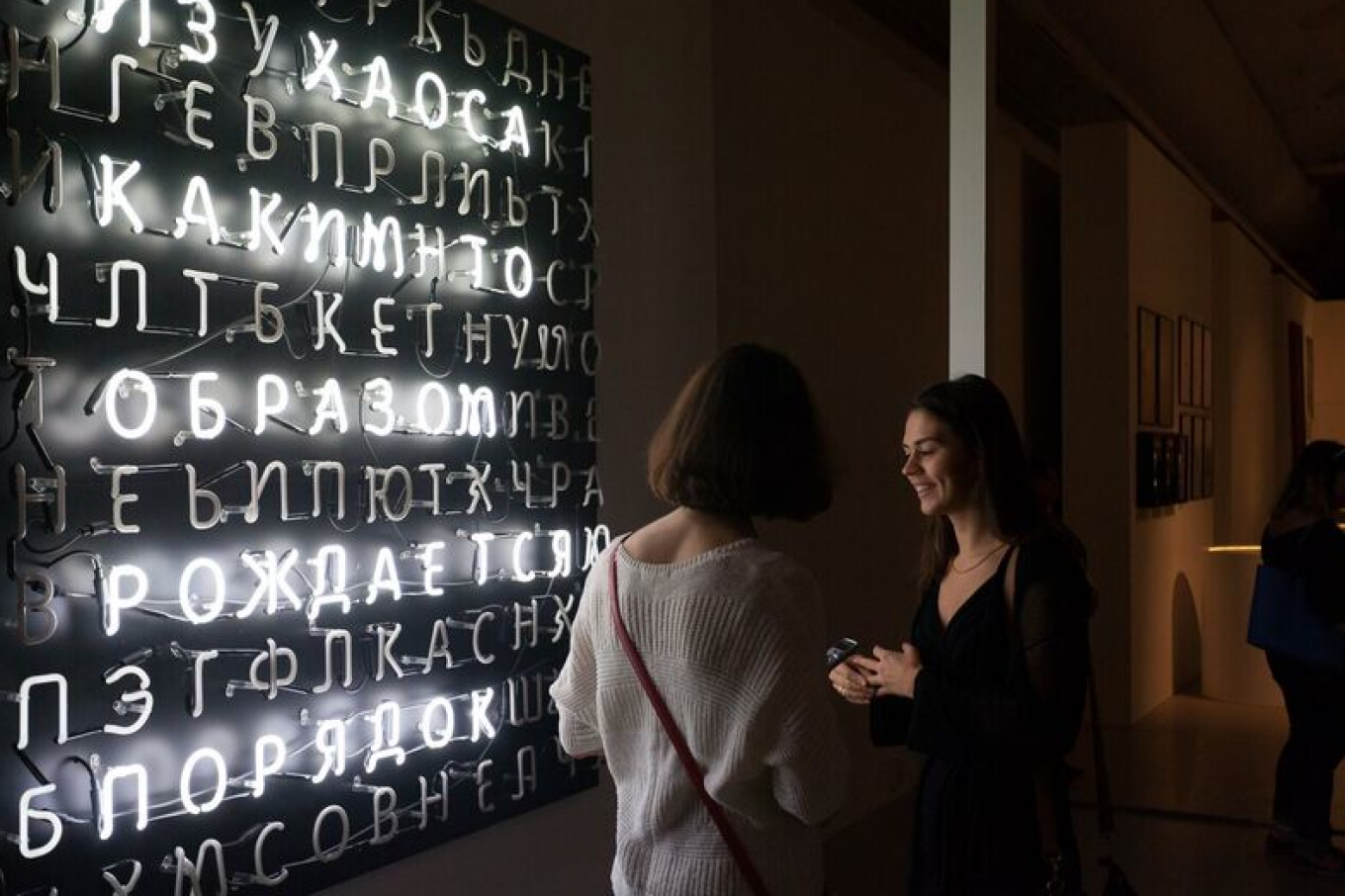
Mythological Biography
Later the exhibition invites museum-goers to look at the “mythological” biography of the writer: the legacy, reproductions and interpretations of his work that the writer had no control over.
The original door of his apartment on Bolshaya Sadovaya Ulitsa has been brought to the Manege for the duration of the exhibition. The apartment became a place of pilgrimage after the writer’s death where fans would quotes from his works on the walls.
One of the most touching exhibits is a heavily censored copy of the Master and Margarita, where fans cut and pasted excerpts from the original manuscript in their rightful places. Soviet authorities couldn’t allow Margarita to be "invisible and free” as she flew over Moscow on a broomstick, so she is simply "invisible".
26 years after Bulgakov’s death his widow finally published “The Master and Margarita.” It was too late for Bulgakov to see the impact of his creative genius, but his work goes on to inspire generations of people in Russia and around the world.
“Bulgakov. Two Biographies” runs at the New Manege through Jan.9. 3/3 Georgiyevsky Pereulok. Metro Okhotny Ryad. moscowmanege.ru
A Message from The Moscow Times:
Dear readers,
We are facing unprecedented challenges. Russia's Prosecutor General's Office has designated The Moscow Times as an "undesirable" organization, criminalizing our work and putting our staff at risk of prosecution. This follows our earlier unjust labeling as a "foreign agent."
These actions are direct attempts to silence independent journalism in Russia. The authorities claim our work "discredits the decisions of the Russian leadership." We see things differently: we strive to provide accurate, unbiased reporting on Russia.
We, the journalists of The Moscow Times, refuse to be silenced. But to continue our work, we need your help.
Your support, no matter how small, makes a world of difference. If you can, please support us monthly starting from just $2. It's quick to set up, and every contribution makes a significant impact.
By supporting The Moscow Times, you're defending open, independent journalism in the face of repression. Thank you for standing with us.
Remind me later.


